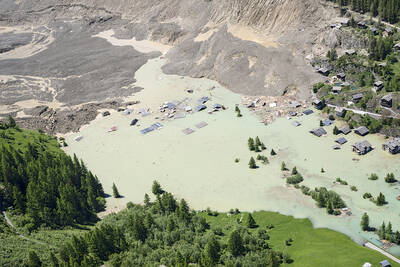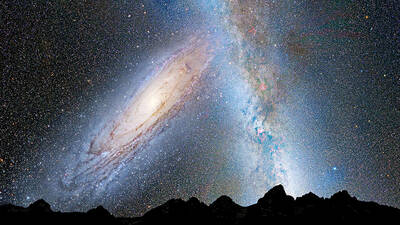A giant sinkhole swallowed a stretch of street on Mexico City's east side, with one man feared killed and 30 families evacuated, authorities said on Monday.
Even in a city where historic buildings regularly lean, crack, collapse or sink below sidewalk level due to excessive water extraction and unstable soil, the 14m-deep sinkhole -- which measures about 15m in diameter -- came as a shock.
It began as a giant crack late on Saturday in the eastern Iztapalapa borough and rapidly worsened; the ground simply collapsed, swallowing a car, the facade of a one-story brick building and pavement.
A young man who was watching the spectacle also fell in on Saturday, and emergency workers were digging with hand tools to try to recover his body, authorities said.
His age was not immediately known.
"The truth is that it is very highly unlikely" that the victim could still be found alive, Mexico City Civil Defense Secretary Elias Moreno said. "But as long as that possibility exists, we are digging very carefully to avoid hurting him if he is alive."
Fissures from the sinkhole extend outward for about 500m, raising the danger of additional collapses. Thirty families whose homes lie near those cracks have been taken to shelters prepared by city authorities.
Moreno said there were about 200 more cracks, fissures and sinkholes in Iztapalapa, which authorities are trying to fill with cement.
He blamed them on the city's triple problem of earthquakes, which cause cracks to appear; the excessive extraction of ground water, which causes sinking, and torrential rains, which make surface soil more likely to collapse.
"All these factors came together to create these problems we have," Moreno said.
Mexico City gets about two-thirds of its drinking water from wells, and the city sinks an average of 7cm to 10cm each year.

The collapse of the Swiss Birch glacier serves as a chilling warning of the escalating dangers faced by communities worldwide living under the shadow of fragile ice, particularly in Asia, experts said. Footage of the collapse on Wednesday showed a huge cloud of ice and rubble hurtling down the mountainside into the hamlet of Blatten. Swiss Development Cooperation disaster risk reduction adviser Ali Neumann said that while the role of climate change in the case of Blatten “still needs to be investigated,” the wider impacts were clear on the cryosphere — the part of the world covered by frozen water. “Climate change and

Poland is set to hold a presidential runoff election today between two candidates offering starkly different visions for the country’s future. The winner would succeed Polish President Andrzej Duda, a conservative who is finishing his second and final term. The outcome would determine whether Poland embraces a nationalist populist trajectory or pivots more fully toward liberal, pro-European policies. An exit poll by Ipsos would be released when polls close today at 9pm local time, with a margin of error of plus or minus 2 percentage points. Final results are expected tomorrow. Whoever wins can be expected to either help or hinder the

DENIAL: Musk said that the ‘New York Times was lying their ass off,’ after it reported he used so much drugs that he developed bladder problems Elon Musk on Saturday denied a report that he used ketamine and other drugs extensively last year on the US presidential campaign trail. The New York Times on Friday reported that the billionaire adviser to US President Donald Trump used so much ketamine, a powerful anesthetic, that he developed bladder problems. The newspaper said the world’s richest person also took ecstasy and mushrooms, and traveled with a pill box last year, adding that it was not known whether Musk also took drugs while heading the so-called US Department of Government Efficiency (DOGE) after Trump took power in January. In a

It turns out that looming collision between our Milky Way and Andromeda galaxies might not happen after all. Astronomers on Monday said that the probability of the two spiral galaxies colliding is less than previously thought, with a 50-50 chance within the next 10 billion years. That is essentially a coin flip, but still better odds than previous estimates and farther out in time. “As it stands, proclamations of the impending demise of our galaxy seem greatly exaggerated,” the Finnish-led team wrote in a study appearing in Nature Astronomy. While good news for the Milky Way galaxy, the latest forecast might be moot